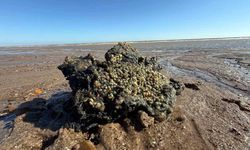Running along the Atlantic coast, the Namib is known for its haunting beauty and dramatic dunes. But it was near the town of Oranjemund, during routine diamond mining operations, that miners stumbled upon something extraordinary. After draining seawater from a 200-meter stretch of land, they uncovered a massive wooden ship—later identified as the Bom Jesus (“Good Jesus”), which vanished in 1533 while en route to India.
What followed was a historical goldmine. Archaeologists retrieved more than 2,000 gold coins, hundreds of kilograms of copper ingots, silver coins, and rare items like elephant tusks. The ship’s cargo matched that of a nau or carrack, a large, ocean-going vessel used by Portuguese explorers during the Age of Discovery.
The Bom Jesus, part of a fleet sent by the Portuguese crown, was on a trading voyage to the Indies—a perilous journey that often lasted months and was plagued by storms, disease, and shipwrecks. Experts believe the vessel met its end during a fierce Atlantic storm that drove it into a reef along the Namibian coastline.
Despite the time that has passed, the wreck’s hull and cargo were astonishingly well-preserved. But one mystery remains unsolved: what happened to the crew? A ship of that size could have carried up to 200 men, yet no human remains were found. Some historians speculate that a few may have survived and made it ashore, though no evidence has confirmed this.
Now known as the Oranjemund Shipwreck, the Bom Jesus offers a rare glimpse into 16th-century seafaring, trade, and exploration. The treasure and artifacts are under Namibian care, with support from the Portuguese government. Still, many of the ship’s secrets remain buried in the sand, waiting to be uncovered.







